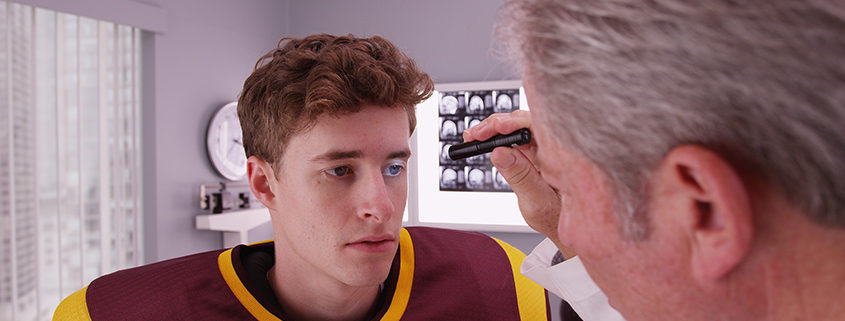Sports-Related Injuries
Did You Know?… Prior history is a great determining factor for future prognosis. An athlete with a prior sports-related concussion is 100-200% more likely to be victim of a second concussion. With each increasing brain injury, the risk further increases.
Traumatic brain injuries in sports, typically referred to as concussions, may or may not be accompanied by a lost of consciousness (occurs less than 10% of time in sports-related concussions). Two of the most notable immediate symptoms are amnesia and confusion. Posttraumatic amnesia refers specifically to loss of memory immediately following assault to brain. In addition, an athlete will typically appear dazed and glassy-eyed.
The most notable sign that you are experiencing a sports-related concussion is a headache, which will often feel like unpleasant pressure on a region of the head. This will occur 70% of the time and can also manifest as a migraine. Compromised vision, difficulty concentrating, and fatigue are other common symptoms.
Evaluation and management are crucial following a sports-related concussion. Our goal at Pathways is to not only address your symptoms, but also focus on your goals and quality of life. We want to help guide and advise you on a possible return to athletics while assuring your safety and well-being. Prior concussion history leaves one vulnerable for future injuries. Pathways makes it our primary concern to protect your head and your best interests as an athlete.
Here are the facts via The Sports Concussion Institute:
- CDC estimates reveal that 1.6 million to 3.8 million concussions occur each year
- 5-10% of athletes will experience a concussion in any given sport season
- Fewer than 10% of sport related concussions involve a Loss of Consciousness (e.g. blacking out, seeing stars, etc.)
- Football is the most common sport with concussion risk for males (75% chance for concussion)
- Soccer is the most common sport with concussion risk for females (50% chance for concussion)
- 78% of concussions occur during games (as opposed to practices)
- Some studies suggest that females are twice as likely to sustain a concussion as males
- Headache (85%) and Dizziness (70-80%) are most commonly reported symptoms immediately following concussions for injured athletes
- Estimated 47% of athletes do not report feeling any symptoms after a concussive blow
- A professional football player will receive an estimated 900 to 1500 blows to the head during a season
- Impact speed of a professional boxers punch: 20mph
- Impact speed of a football player tackling a stationary player: 25mph
- Impact speed of a soccer ball being headed by a player: 70mph


